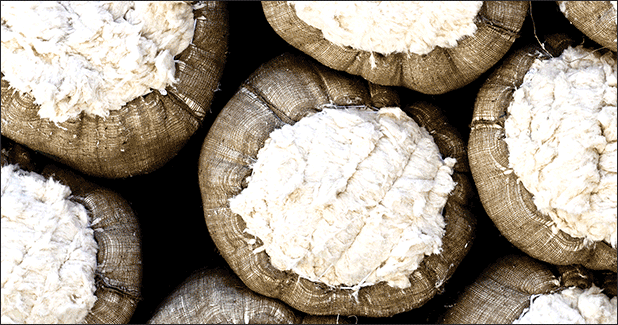
Optimism on export of surplus cotton
Among the major cotton producing countries, India holds the largest area under cotton cultivation, which covers around 11-13 million hectares of agricultural land constituting about 40 per cent of world’s total area under cotton cultivation, says Amit Gugnani of Technopak.
Among the major cotton producing countries, India holds the largest area under cotton cultivation, which covers around 11-13 million hectares of agricultural land constituting about 40 per cent of world’s total area under cotton cultivation, says Amit Gugnani of Technopak.
Cotton plays a vital role in the India’s economy as Indian textile industry is predominantly cotton based. India is one of the leading producers of cotton in the world and accounts for around 26 per cent of the world’s total cotton production. Some of the major cotton producing states in India includes Gujarat, Maharashtra, Telangana, Andhra Pradesh, Karnataka, Madhya Pradesh, Haryana, Rajasthan and Punjab. Among the major cotton producing countries, India holds the largest area under cotton cultivation, which covers around 11-13 million hectares of agricultural land constituting about 40 per cent of world’s total area under cotton cultivation. In spite of having world’s largest area under cotton cultivation, there is still a scope of improvement in the yield per hectare in India, which is still lower against the world average (about 701 kg to 766 kg per hectare). During the financial year 2015-16, Gujarat was the largest producer of cotton followed by Maharashtra and Telangana.
Exports and imports scenario
India’s cotton export constitutes majorly to its neighbouring countries. Bangladesh and China are the largest importers of cotton from India. China imported cotton worth $1.9 billion in 2015 from India which dipped to the value of $1.3 billion in 2016. Bangladesh too witnessed a reduced import worth $1.5 billion in 2016 from $1.6 billion in 2015 from India. The reduction in exports can be attributed to the prevailing circumstances towards the end of last year, which further lead to non-fulfilment of orders due to unavailability of cotton in the country. Pakistan, Vietnam and Sri Lanka are other favourite export destinations of Indian cotton.
The prevailing circumstances towards the end of last year in the country had a major impact on the overall cotton trade. Cash crunch led farmers to hold back cotton as they prefer to deal in cash. As a result surge was witnessed in cotton pricing attributing to shortage in cotton supply. This shortage of cotton ultimately increased the domestic pricing which compelled industry to import cotton early. The imports of cotton yarn and fibre in the month of Nov 2016 ($157 million), witnessed an increase of around 50 per cent from $79 million in the month of October 2016.
The future
Indian exporters are optimistic about meeting the earlier export figures as Chinese yarn auction has started at a higher rate than what has been prevailing in India. This means Chinese cotton is costlier/ dearer compared to Indian cotton. Despite a duty levied by China on imports from India, increased exports can be expected. The resumption in cotton imports by Pakistan, also one of the major importers of Indian cotton, will help India in exporting its surplus cotton.
But, all these things will depend on the strength of rupee against dollar. In the current scenario, the strong rupee favours imports as it becomes cheaper to buy cotton from international market compared to local market. India’s currency has witnessed a growth of 4.8 percent so far in 2017 against dollar. Lower domestic supply will also facilitate imports, as Indian farmers are holding supply of cotton, hoping to achieve higher prices of cotton later in the year.
The implementation of GST is expected to provide a unified tax structure to cotton with MMF especially polyester. With the final GST rates yet to be announced, even the lowest rate of 8 per cent will affect cotton value chain adversely as it currently attracts zero excise duty. The industry is hopeful though, that the cotton will continue to attract a zero taxation.
Global scenario
The global stocks are expected to decline, as cotton consumption continues to exceed production in China while imports are restricted. Outside China, forecast for its growth is expected to be moderate. China’s stocks and import policy, as well as India’s ability to re-enter the export market, provide significant uncertainty for global markets. In addition, a struggling global economy and competition from man-made fibres underscore the challenging landscape facing cotton demand. High cotton prices and easy availability of man made fibre at competitive rates led to slower growth of production of cotton yarn.
The article is authored by Amit Gugnani, who is Senior Vice President, Fashion – Textile & Apparel, Technopak, India’s leading management consulting firm that focuses on various divisions – retail, consumer product and e-tailing, and fashion (textiles and apparel).



